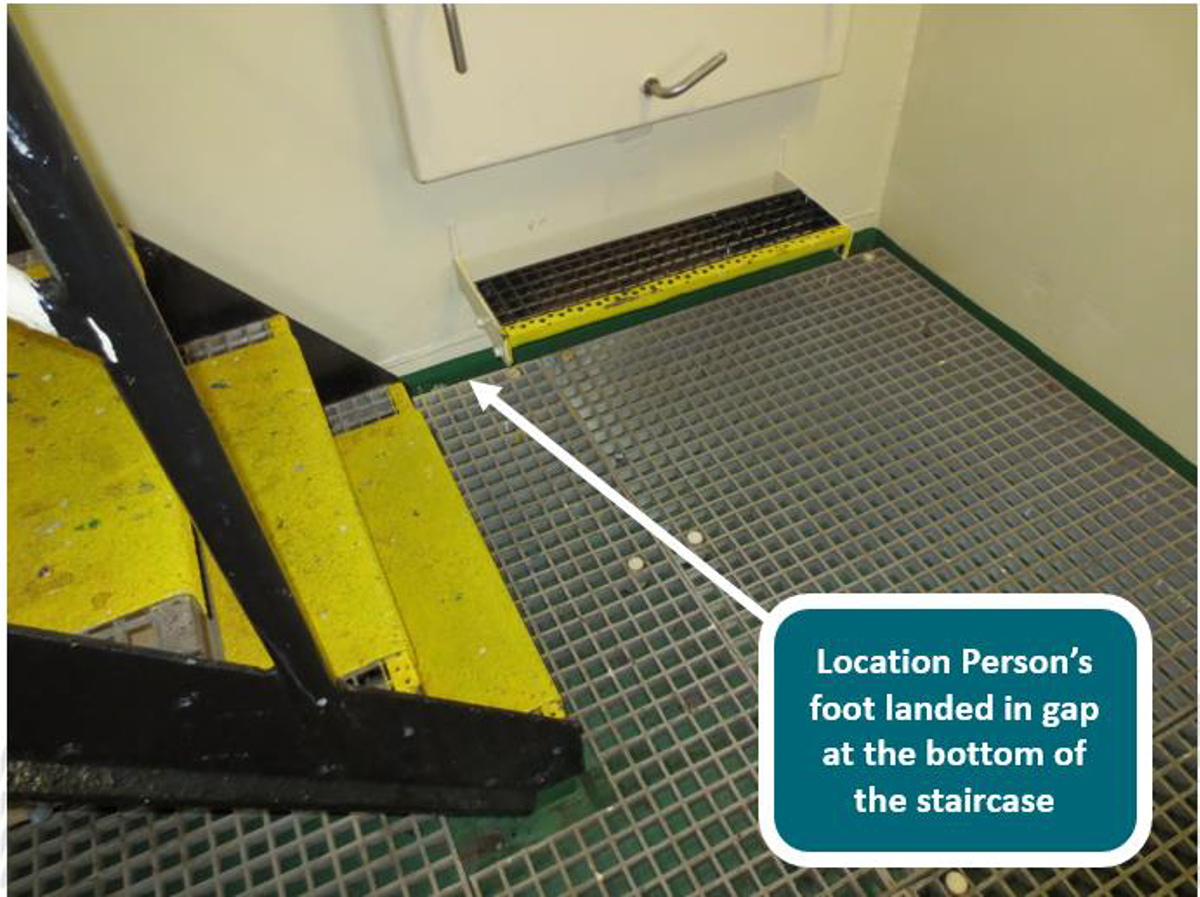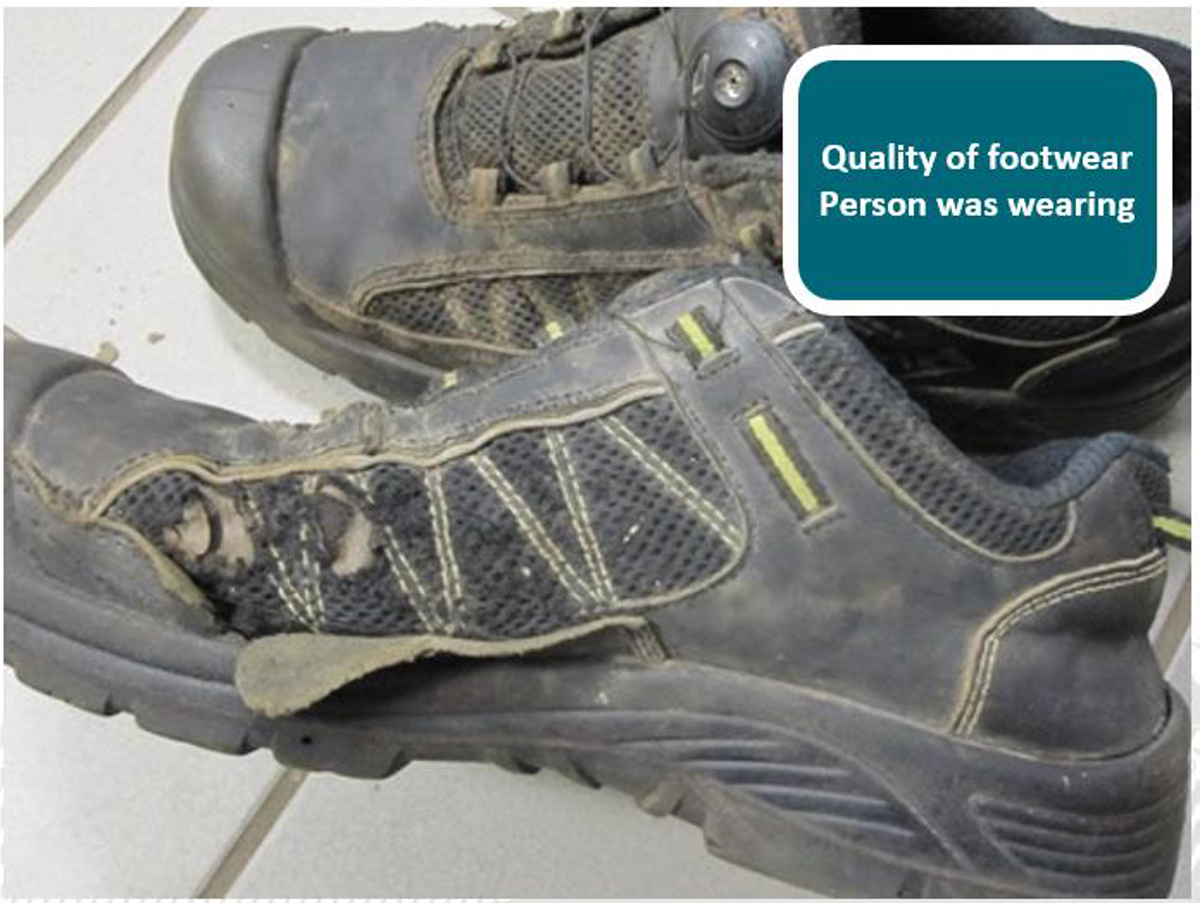Lost Time Injury (LTI): Fall on Staircase
- Safety Flash
- Published on 25 September 2018
- Generated on 31 December 2025
- IMCA SF 22/18
- 2 minute read
Jump to:
A crewman on a vessel lost his balance going down some stairs and fell, resulting in a fractured ankle.
What happened?
His foot got caught in a gap as he landed at the bottom of the stairs. He suffered 3 broken bones and his foot was dislocated. He was evacuated by helicopter to hospital, where surgery was performed a number of days after the event.

What went wrong?
- The injured person lost footing when descending staircase:
- he was not rushing, and it was stated he was not showing any signs of pressure or stress prior to the event
- there was no significant vessel movement (wave height 2mHs, wind NE 25knots)
- person stated he was holding the handrail;
- His safety shoes were in a poor condition and did not meet company standard (ankle height).

What were the causes?
- Immediate causes:
- person lost footing and fell forward
- complacency/lack of situational awareness
- potentially poor standard of footwear, however soles of shoes were not excessively worn.
- Underlying causes:
- potential for tiredness/fatigue – the incident occurred on a nightshift.
- failure to identify that the gap at the bottom of the staircase may present a hazard. Although it should be noted that the stairs were classified in accordance with local regulatory standards.
What lessons were learned?
- Worn out personal protective equipment (PPE) should be checked regularly and replaced when required.
- Never rush on stairways and always keep one hand firmly on the handrail, utilising the trailing hand technique where possible.
What actions were taken?
- Additional warning signage was placed at top of the staircase.
- Review of instructions/expectations regarding company standard of safety footwear.
- Improvement modification was added to staircase in order to prevent a person’s foot from becoming caught between the single protruding step and the staircase.
Related Safety Flashes
-
IMCA SF 31/17
15 December 2017
-
-
IMCA SF 20/15
3 December 2015
-
IMCA SF 06/15
8 May 2015
IMCA Safety Flashes summarise key safety matters and incidents, allowing lessons to be more easily learnt for the benefit of the entire offshore industry.
The effectiveness of the IMCA Safety Flash system depends on the industry sharing information and so avoiding repeat incidents. Incidents are classified according to IOGP's Life Saving Rules.
All information is anonymised or sanitised, as appropriate, and warnings for graphic content included where possible.
IMCA makes every effort to ensure both the accuracy and reliability of the information shared, but is not be liable for any guidance and/or recommendation and/or statement herein contained.
The information contained in this document does not fulfil or replace any individual's or Member's legal, regulatory or other duties or obligations in respect of their operations. Individuals and Members remain solely responsible for the safe, lawful and proper conduct of their operations.
Share your safety incidents with IMCA online. Sign-up to receive Safety Flashes straight to your email.